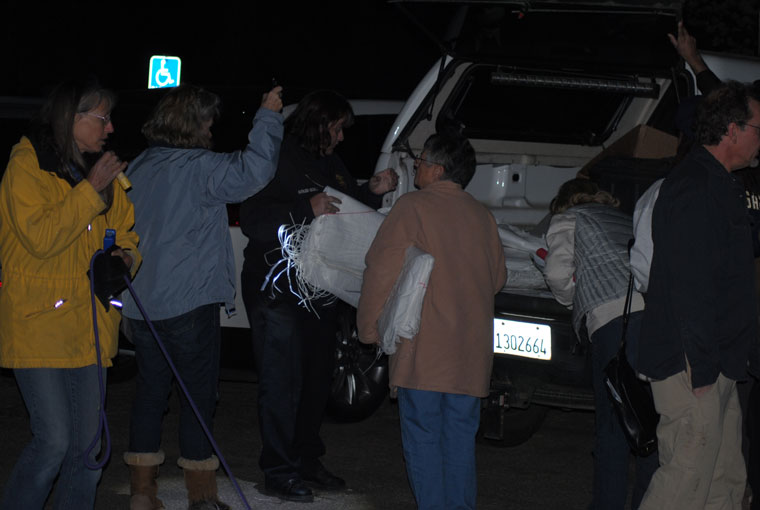
The effects of the rainfall from impending El Niño conditions create more responsibilities in the rural parts of Riverside County than urban residents will experience, according to several county representatives. They were on the Hill to discuss what local residents can do to prepare for the rain, run-off and potential problems.
The speakers encouraged an audience of more than 60 people Wednesday night, Dec. 2, at the Idyllwild Nature Center to “protect yourself, but don’t harm your neighbors.”
Cities have curbs, gutters and large drain systems, which will help remove the flowing and flooding water from those streets. Those urban conveniences are not present here. Many properties on the Hill are lower than the adjacent roadway. Locals need to prepare before the storms arrive.
Flood insurance is one option, said Robert Cullen, chief of the Design and Construction Division for the County Flood Control and Water Conservation District. For those who may be interested, he directed them to the website www.floodsmart.gov or to call 1-888-call-flood.
Cullen stressed that the current warm-water temperatures in the eastern Pacific portend a very wet winter. “It’s a good indicator of above-average rainfall,” he said. “… more storms, not super storms, very similar to the 1997-98 winter.”
The concern, he expressed, was that local hillsides become saturated from the rainfall, and rockslides or collapsing hillsides might result.
Jared Gibbon, of the County Department of Transportation, urged that before the storms begin, residents be sure their gutters and roofs are clear, fix roof leaks, check for loose roof tiles or shingles, and store outdoor furniture or other objects that might be damaged or thrown by strong winds.
Although fire officials urge removing pine needles and leaves, he said that in preparation for an above normal rain season, they help mitigate soil erosion. Also, drainage areas should be cleared to permit water to flow naturally downhill.
If property owners have questions about cleaning or slope stabilization, removing debris from drainage areas or regulatory issues, they may call the county’s Community Drainage Task Force at 951-955-2004.
The major stream on the Hill is Strawberry Creek. Property owners adjacent to the creek need to check with the county before disturbing the creek’s flow because county, state or federal permits may be needed, Gibbon warned. For example, do not remove soil or rocks from the streambed before asking these questions.
If channels, road culverts or roadside ditches are clogged during a storm and water is building up, Kathy Henderson of the county’s Emergency Management Department told attendees that they may call 951-955-1230 for help.
She also recommended that people prepare hazard kits in case flooding occurs and to have a plan in case utilities are affected.










